How Is Aleppo Soap (Savon d'Alep) Made?
How Is Aleppo Soap (Savon d'Alep) Made?

When people buy Aleppo Soap, they are buying a piece of soap like no other. People are actually buying one of the few completely natural cosmetic and personal care products on the planet, a precious piece of art handcrafted by experts using traditional techniques that have been passed down through generations over thousands of years. We are not just talking about a piece of soap. We are looking at a piece of living history.
Aleppo Soap is manufactured according to long established traditional production techniques in old factories and open-air markets in Aleppo, Syria, using oil from trees that grow naturally in the local environment without damaging the local ecosystem.
Olive oil and laurel berry oil are the only two ingredients that remain in Aleppo Soap following its curing process that takes approximately nine months.
During production, olive oil, laurel berry oil, lye and water are combined to create saponification, which is the chemical reaction between the lye and fat that makes bar soap.

Traditional Aleppo Soap uses a 'hot process' involving large vats of olive oil, water and lye. The ingredients are mixed and heated (boiling with traditional underground fires) over several days, in which time the oil reacts with the lye and water resulting in a thick liquid soap. This is known as the saponification process.
Towards the end of this process, laurel oil is added by hand. When the mixture reaches the perfect consistency it is then removed from the vat and poured onto wax paper covered floors.
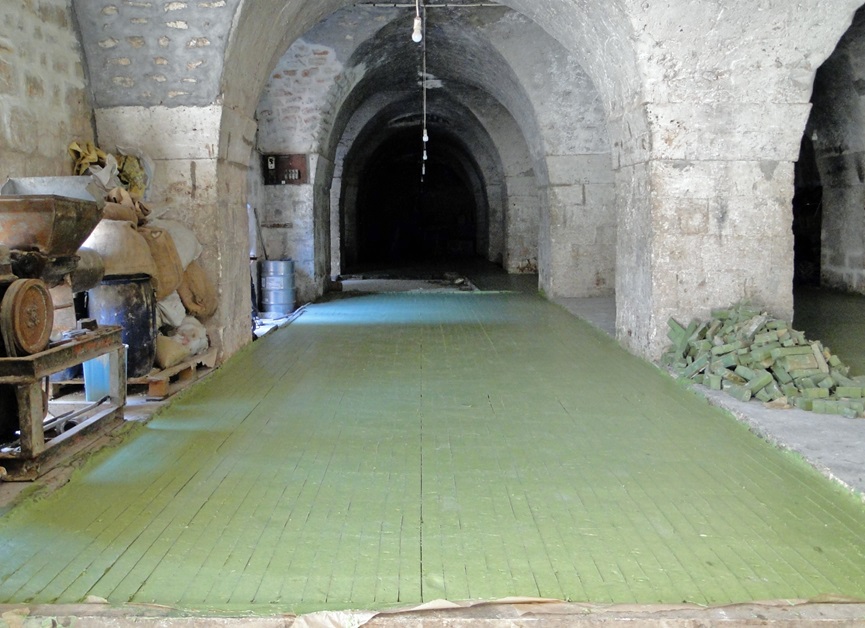
The resulting large, green, flat mass of soap is left to cool down and solidify before being cut, branded and placed on racks to allow air exposure and then aged from six months to a year (sometimes as long as seven years).
As the Aleppo Soap is cooling, workers with planks of wood strapped to their feet walk over the drying soap to smooth the surface and make it an even thickness.
The soap mass is then cut into cubes and the cubes of soap are stacked in staggered cylinders to allow maximum air exposure.
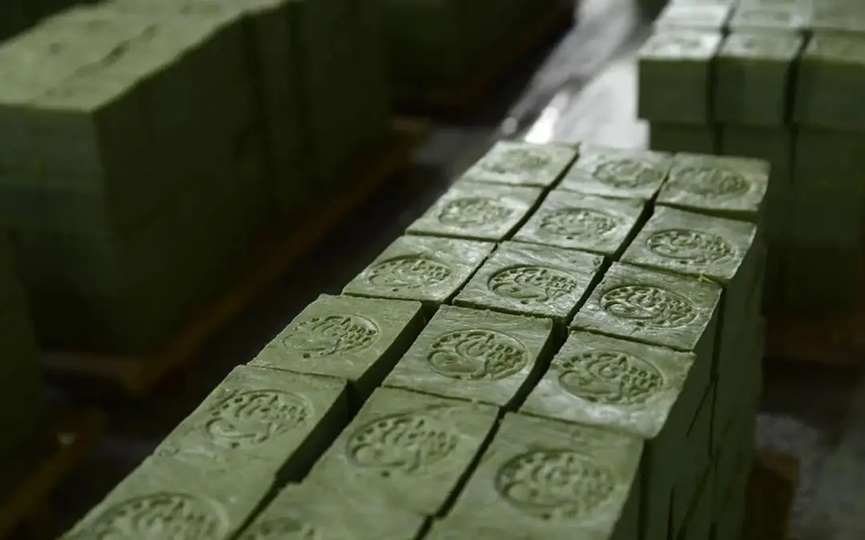
Once they have dried sufficiently, the soap blocks are put into a special subterranean chamber to be aged for six months to a year.
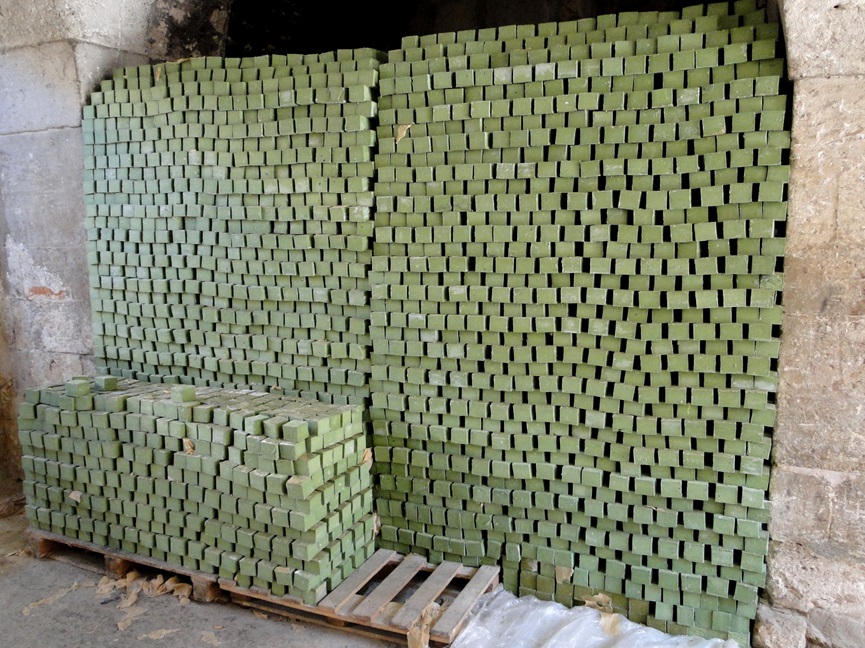
While it is aging, the soap goes through several chemical changes. The free alkaline content of the soap (the alkaline which did not react with the oil during saponification) breaks down upon slow reaction with air. The moisture content of the soap is also reduced, making the soap hard and long lasting.
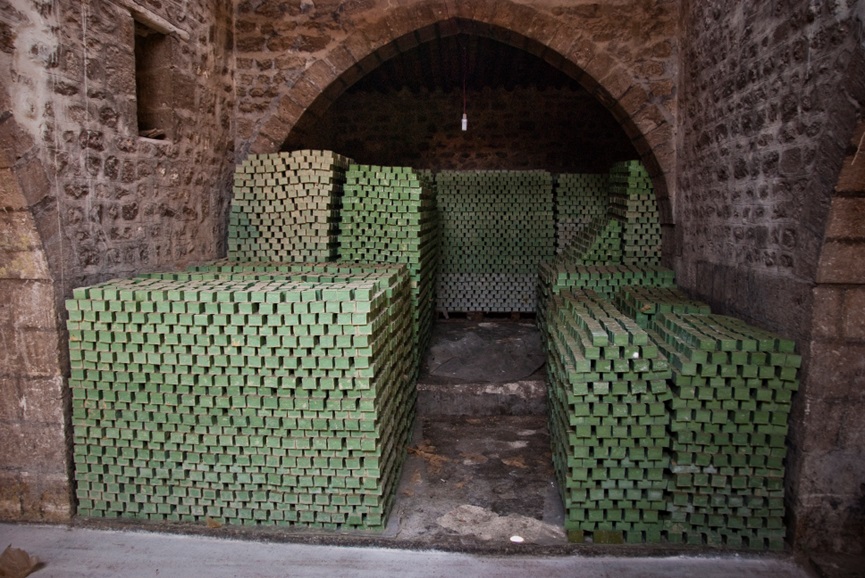
The moisture content of the soap is also reduced, making the soap hard and long lasting. The external colour of the soap turns from green to pale gold or gold/beige, while the inside remains green as Aleppo Soap dries. The higher the laurel oil content, the darker the exposed crust of the soap.
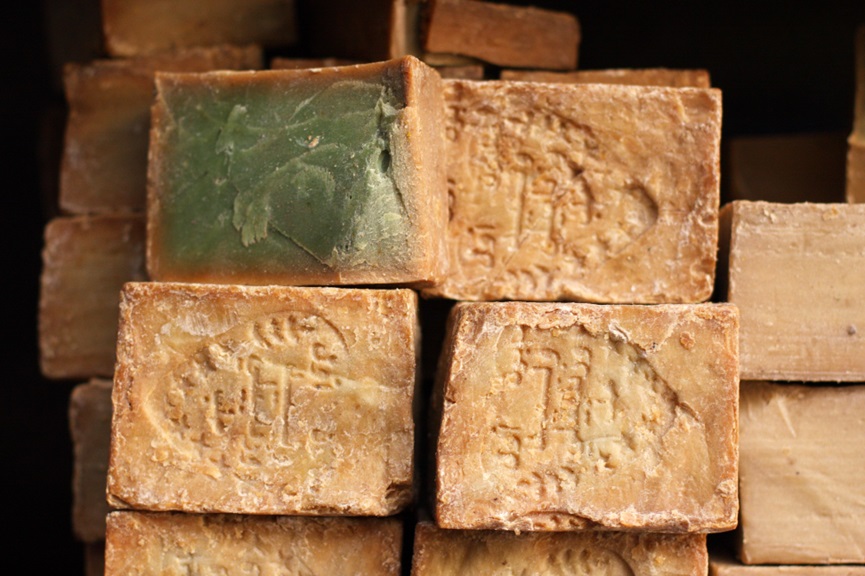
Aleppo Soap is biodegradable unlike most modern day, mass produced soaps. Unusually, Aleppo Soap can also float in water due to its high oil concentration and the lengthy drying period (typically 9 or 10 months).
In addition to traditional Aleppo Soap, recent times have seen a growth in popularity of modern Aleppo Soaps manufactured using a cold process.

While they contain nourishing oils much like traditional Aleppo Soap, these contemporary soap derivations may contain a variety of herbs and/or essential oils.

